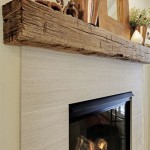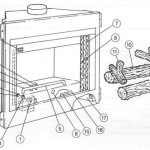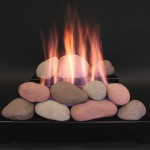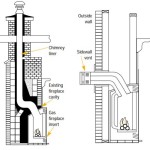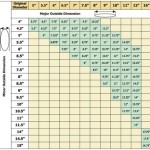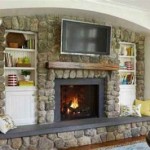Understanding Blue Flames in Gas Fireplaces
Gas fireplaces offer a convenient and aesthetically pleasing alternative to traditional wood-burning fireplaces. They provide warmth and ambiance with the simple flick of a switch or the push of a button. However, sometimes homeowners observe a blue flame in their gas fireplace, which can raise concerns about the fireplace’s functionality and safety. While a predominantly yellow flame is usually desired for aesthetic reasons, a localized blue flame in a gas fireplace isn’t necessarily a cause for immediate alarm, but understanding its causes is crucial for ensuring the fireplace operates correctly and safely.
The color of a flame in a gas fireplace is directly related to the completeness of the combustion process. Complete combustion, where fuel is efficiently burned with sufficient oxygen, produces a cleaner, hotter flame that tends towards the blue end of the color spectrum. Incomplete combustion, characterized by insufficient oxygen, produces a cooler, less efficient flame that is typically yellow or orange. The yellow color comes from unburnt carbon particles that are heated to incandescence in the flame.
Several factors can contribute to the presence of blue flames in a gas fireplace. These range from the basic chemistry of combustion to issues with the fireplace's components and the environment in which it operates. Identifying the underlying cause is essential for maintaining the fireplace’s efficiency, safety, and visual appeal.
Understanding the Chemistry of Combustion and Flame Color
The color of a flame is determined by the substances that are burning and the temperature they reach. Natural gas, primarily methane, burns cleanly when it has sufficient oxygen. The complete combustion of methane produces carbon dioxide and water, releasing energy in the form of heat and light. Ideally, this process should yield a predominantly blue flame. A blue flame indicates that the methane molecules are breaking down completely and efficiently, leaving very little unburnt fuel to cause a yellow or orange hue.
However, achieving complete combustion is not always guaranteed. Dust, debris, or even volatile organic compounds (VOCs) in the air can interfere with the combustion process. These contaminants can alter the flame color, sometimes creating mixtures of blue, yellow, and orange. Small, localized blue flames at the base of the burner are often normal and represent areas where the gas is mixing most effectively with the available oxygen. It is when the entire flame turns blue or a significantly large portion does, that further investigation is necessary.
The presence of certain impurities in the gas supply can also affect flame color. While natural gas is typically purified before distribution, trace elements may still be present and can impact combustion. These elements, when heated in the flame, emit light at specific wavelengths, thereby influencing the overall color. The specific impact of impurities will depend on their nature and concentration.
Potential Causes of Blue Flames in Gas Fireplaces
While small blue flames close to the burner are usually normal, a predominantly blue flame across the entire fireplace can indicate a problem. One common cause is an imbalance in the air-to-fuel ratio. If the gas valve is set too high or the air intake is restricted, the fireplace may receive an excess of gas relative to the available oxygen. This can lead to incomplete combustion and a blue flame, along with potentially producing carbon monoxide, a dangerous odorless and colorless gas.
Dirty or obstructed burner ports are another potential culprit. Over time, dust, soot, and other debris can accumulate in the burner ports, restricting the flow of gas and disrupting the air-fuel mixture. This can cause localized areas of incomplete combustion, resulting in blue flames in those specific areas. Regular cleaning and maintenance of the burner assembly are crucial for preventing this issue.
A malfunctioning gas regulator can also contribute to a blue flame. The gas regulator is responsible for maintaining a consistent gas pressure to the fireplace. If the regulator fails to function correctly, it might deliver too much gas to the burner, leading to an excessively rich mixture and incomplete combustion. This situation can be identified by observing the flame height and consistency; an unusually high and unstable flame may suggest a regulator issue.
Furthermore, new construction or remodeling activities can sometimes introduce volatile compounds or dust into the air, affecting the flame color. The residue from paints, adhesives, or other building materials can temporarily alter the combustion process, leading to a blue or mixed-color flame. This is usually a temporary condition that resolves once the air clears.
Addressing and Preventing Blue Flames
Addressing the issue of blue flames in a gas fireplace requires a systematic approach, starting with safety precautions. If a homeowner suspects that the blue flame is caused by a gas leak or carbon monoxide production, it is crucial to immediately turn off the fireplace, ventilate the area, and contact a qualified HVAC technician for inspection. It is always best to err on the side of caution when dealing with gas appliances. A properly functioning carbon monoxide detector is also essential.
Regular maintenance is key to preventing blue flames and ensuring the safe and efficient operation of a gas fireplace. This includes cleaning the burner assembly, inspecting the gas valve and regulator, and checking the air intake for obstructions. Homeowners can typically perform basic cleaning tasks themselves, but more complex repairs and adjustments should only be performed by qualified technicians.
Ensuring proper ventilation is also crucial. Adequate airflow around the fireplace allows for complete combustion and prevents the buildup of carbon monoxide. Avoid blocking the air vents or placing objects too close to the fireplace that could obstruct airflow. Proper ventilation also helps to dilute any volatile compounds that may be present in the air, reducing their impact on the flame color.
When in doubt, consult a qualified gas fireplace technician. They have the expertise and equipment to diagnose and repair any issues with the fireplace, ensuring its safe and efficient operation. A professional inspection can identify potential problems before they escalate into more serious issues, saving time, money, and ensuring peace of mind.

Why Gas Fireplaces Have A Blue Flame Can It Be Changed Fireplace Tips

Why Gas Fireplaces Have A Blue Flame Can It Be Changed Fireplace Tips

Why Gas Fireplaces Have A Blue Flame Can It Be Changed Fireplace Tips

Why Does A Propane Flame Burn Blue

Why Is My Gas Fire Pit Flame Blue And How Do I Fix It

Why Does Propane Burn Blue In Color Depew Oil

Lpg Flame Colour Elgas

Why Do Gas Fireplaces Have A Blue Flame Explained Homey Hearth

What Color Should Your Furnace Flame Be Cafco Services

What Colour Should A Gas Flame Be Harlow

